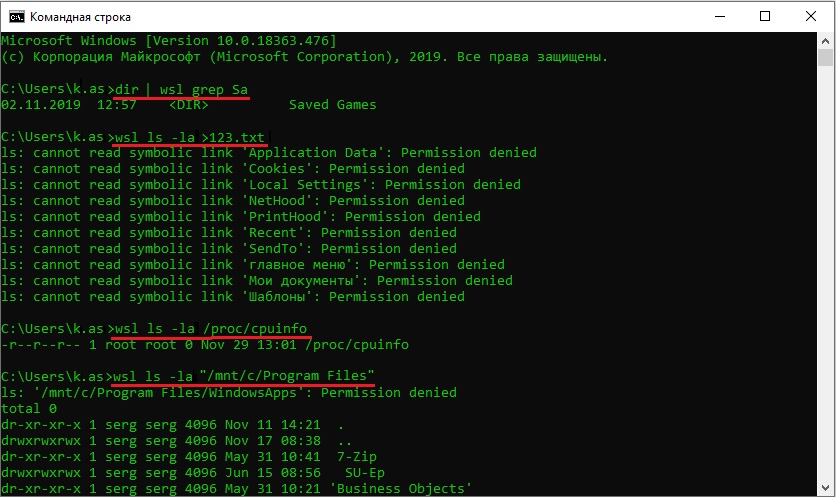

#UBUNTU CPUINFO PASSWORD#
The value SOME_HASHED_PASS, as the name suggests, contains the hashed password that the created user will receive. The minimum configuration necessary for a basic system installation looks like this: #cloud-config There is of course the possibility of using debian preseed (Ubuntu is a mutated Debian), however the autoinstall mentioned above will be more friendly. Now it’s time to prepare the automatic installation configuration.

We will create a 10GB file which will be our virtual disk for the machine. We will start by preparing the “place” where the system will be installed. We will create a virtual machine with Ubuntu Server 20.04, so in this case we can use the autoinstall tool. There are two ways to do this – you can do it manually using virt-manager or use an automated solution. You have successfully prepared the environment, so you can move on to setting up a virtual machine. virt-manager is a window-based virtual machine managerįinally, the user should be added to the groups kvm and libvirt: sudo usermod -aG libvirt $(whoami)įor the above commands to take effect, you must log out and log back in.virtinst contains a package of commands to manage virtual machines.bridge-utils is used to configure bridges that allow network communication.libvirt-clients allows you to manage virtualization platforms.libvirt-daemon-system adds configuration files to run the service on your system.quemu-kvm is used to support KVM hardware virtualization.
#UBUNTU CPUINFO INSTALL#
The next step to perform is to install the following packages: sudo apt install qemu-kvm libvirt-daemon-system libvirt-clients bridge-utils virtinst virt-manager If everything is configured correctly, when you run the kvm-ok command, you should see more or less this message: INFO: /dev/kvm exists This is done with the kvm-ok command, which becomes available after installing the package cpu-checker: sudo apt install cpu-checker The next step is to check whether the processor supports hardware virtualization.
#UBUNTU CPUINFO MANUAL#
There is no one way to do it – it’s worth checking in the manual or on the manufacturer’s website. If it returns 0, you have to check in BIOS settings if virtualization is enabled. In my case, the command returned 16, which is the number of CPU cores.

Use the following command to do this: grep -Eoc '(vmx|svm)' /proc/cpuinfo

The first step is to verify if the processor supports virtualization technology. Model name : Intel(R) Celeron(R) CPU N3150 1.15 March 2021 Installing KVM on Ubuntu 20.04 Linux Pni pclmulqdq dtes64 monitor ds_cpl vmx est tm2 ssse3 cx16 xtpr pdcm sse4_1 sseĤ_2 movbe popcnt tsc_deadline_timer aes rdrand lahf_lm 3dnowprefetch ida arat epī invpcid_single tpr_shadow vnmi flexpriority ept vpid tsc_adjust smep ermsįlags : fpu vme de pse tsc msr pae mce cx8 apic sep mtrr pge mca cmov pat pse36 clflush dts acpi mmx fxsr sse sse2 ss ht tm pbe syscall nx rdtscp lm constant_tsc arch_perfmon pebs bts rep_good nopl xtopology nonstop_tsc aperfmperf pni pclmulqdq dtes64 monitor ds_cpl vmx est tm2 ssse3 cx16 xtpr pdcm sse4_1 sse4_2 movbe popcnt tsc_deadline_timer aes rdrand lahf_lm 3dnowprefetch ida arat epb invpcid_single tpr_shadow vnmi flexpriority ept vpid tsc_adjust smep erms Onstant_tsc arch_perfmon pebs bts rep_good nopl xtopology nonstop_tsc aperfmperf Pat pse36 clflush dts acpi mmx fxsr sse sse2 ss ht tm pbe syscall nx rdtscp lm c Model name : Intel(R) Celeron(R) CPU N3150 1.60GHzįlags : fpu vme de pse tsc msr pae mce cx8 apic sep mtrr pge mca cmov Manual uptime report (located on /bin) is OK.Ĭat /proc/cpuinfo seems OK as well and report as below:Īddress sizes : 36 bits physical, 48 bits virtual here same behavior on Synology DSM (NAS).Īnd also for my assumption regarding 'uptime' field but maybe I'm wrong :


 0 kommentar(er)
0 kommentar(er)
